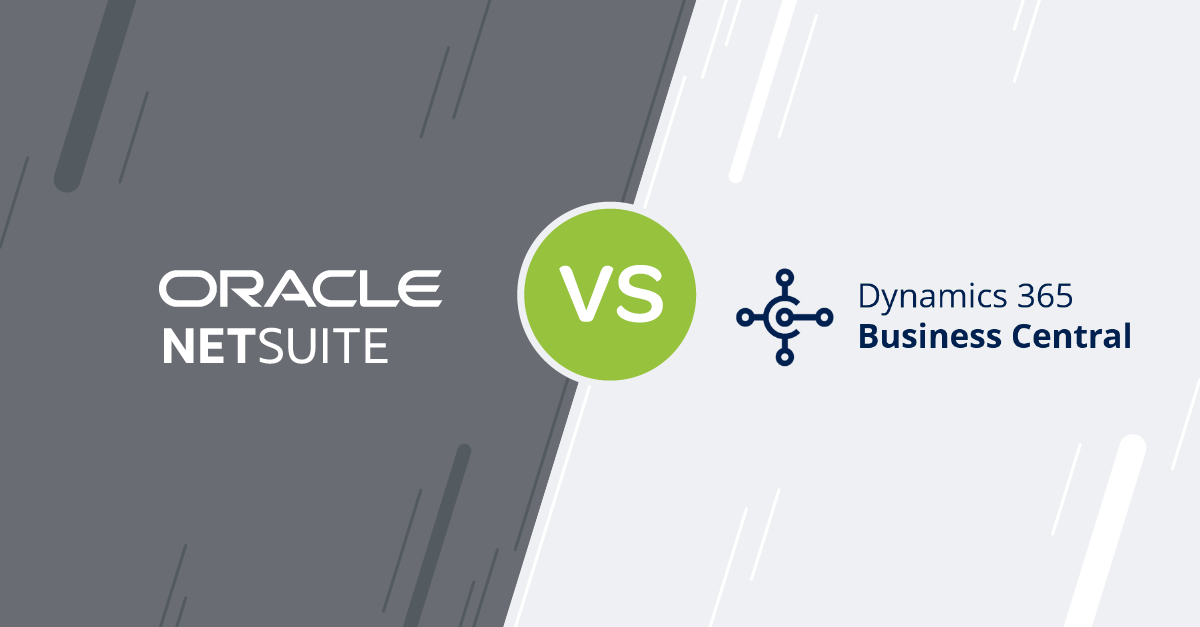Blog
Share this
5 Common ERP Problems (and How to Avoid Them)

by Carly Caines on October 02, 2025
ERP can drive big value. But only if it’s done right.
Too often, companies are disappointed with the results of their ERP system. In most cases, the system itself isn’t to blame. The real issues usually come down to how the project was planned, executed or supported.
Here are the five most common ERP problems we’ve encountered and how you can avoid them.

Problem #1: Choosing the wrong solution (or not having it configured properly)
Many ERP challenges trace back to the system itself, or more accurately, how it was set up.
In some cases, the issue is a genuine mismatch. The software may lack key functionality or fail to scale as your business grows. But more often, the real problem comes from the way the system was implemented. If it was deployed using a generic out-of-the-box template or without a deep understanding of your processes, it may not reflect the way your business actually works. That’s when you see workarounds, clunky processes and frustrated users.
Imagine you’re a manufacturer whose customers insist on using paper order forms and it’s slowing down your order process. If your ERP partner only relies on standard out-of-the-box tools for a quick fix, you may still be stuck with manual data entry and workarounds. That’s when frustration builds and ERP itself often takes the blame.
The right partner will dig deeper to understand the real challenge and look beyond default features. Instead of forcing you to adapt to a limited tool, they’ll recommend creative solutions—like using OCR technology to capture data from paper forms and feed it directly into your ERP. The result is a process that’s both more efficient and better aligned with how your business actually operates.
In many situations, what you really need is a thoughtful review of your configuration. Often fine-tuning what’s already there is enough to get the system working the way it should.
Solution
From the beginning of your ERP project, start by documenting your business requirements in detail. Go beyond listing features and identify the processes that matter most, the challenges you want to solve and the outcomes you expect. This will become your benchmark to evaluate both the ERP system and the way it’s configured.
Also, ensure you’re engaging in a proper discovery process and demos that use your actual workflows. A generic demo might look polished, but it won’t show you how the system handles the real way you do business.
You should also pay close attention to how the system will be implemented. Preconfigured approaches, like template implementations, can be a great option in the right situation. They speed up deployment, reduce upfront costs and can provide best practices that smaller or less complex businesses can benefit from. But it’s important to understand the limitations. A rigid, template-based approach may not leave much room to adapt the system if your processes are more complex or if your business changes over time. The key is asking the right questions up front about how flexible the system will be and what options you’ll have for tailoring or customization in the future.
Problem #2: Your ERP partner doesn’t understand your business
Your ERP partner has just as much impact on project success as the system itself. If they don’t take the time to understand your business, there’s a higher risk that the system won’t match your day-to-day reality. Maybe the workflows are messy, reporting doesn’t give you the insights you need, or your team might feel like they’re working even harder just to use the new system.
These problems usually happen when partners focus only on the technical setup, without digging into the business challenges behind it. A discovery process that skips past the “why” leaves you with a system that looks fine on paper but doesn’t deliver in practice.
The right partner will do more than install software. They’ll uncover what’s holding your business back and shape the system around your goals.
Solution
When looking for an ERP partner, don’t hesitate to ask for case studies or references from their customers. They should be able to share real examples of how they’ve helped companies like yours solve similar challenges. This gives you confidence that they understand both the software and the realities of your business.
Equally important is how they approach discovery. A strong partner will take the time to learn how your business operates, where the pain points are and what success looks like for your team. That understanding should carry forward into implementation. The hand-off from sales to consulting should feel seamless, with no need to repeat the same details—your implementation team should already have a solid grasp of your priorities.
Finally, the real value comes when your partner can translate this knowledge into meaningful improvements. The right team won’t just configure software—they’ll help you refine processes, adopt best practices and introduce customizations only where they’ll make a measurable difference. That’s how you get an ERP system that truly supports your growth.
Problem #3: Not preparing your data
Messy data can quickly derail an ERP project.
If you go live with duplicates, missing fields or inconsistent formatting, your team won’t trust the system. Reports will be unreliable. People will find workarounds and cleaning it up later is a lot harder than getting it right from the start.
Solution
The best way to avoid data issues is to start early with a clear plan. Define who is responsible for each data set, set realistic timelines and make sure expectations are shared across the team. This creates accountability and helps prevent cleanup from being rushed at the last minute.
Your ERP partner should also play a key role in this process. An experienced partner can provide proven tips for data cleansing and consolidation, helping you spot problems before they impact the system. And if your data isn’t ready, a partner who has your best interests at heart will push back and recommend delaying the project rather than moving ahead with bad data.
When your data is clean, consistent and trusted, your ERP system becomes far more powerful. Treat this step as a business priority, not an IT task, and you’ll set a strong foundation for success
Problem #4: Clinging to old processes
If you try to rebuild your old processes inside your new ERP system, you’ll miss the opportunity to truly transform operations.
ERP isn’t just about replacing software. It’s a chance to rethink how your business runs. But when teams are too focused on making the new system look like the old one, they often recreate inefficient workflows and overlook new functionality that wasn’t available before.
This not only adds complexity and cost, but it also limits the benefits you gain from the new system.
Solution
The best ERP partners won’t let you fall into this trap. They’ll challenge you to step outside your comfort zone and encourage you to rethink your processes, even when it feels easier to stick with the familiar. By combining best practices with a deep understanding of your business, they’ll guide you toward smarter, more efficient ways of working.
ERP is your opportunity to move forward. Don’t let outdated processes hold you back.
Involve your team early—even during the ERP selection process. When employees have the chance to share what isn’t working in the current system and what they’d like to see improved, it does two things. First, it creates better processes that solve real problems. Second, it fosters stronger adoption, because employees feel included in the process instead of having new workflows forced on them.
Problem #5: Overlooking the human side of ERP
Technology alone won’t make your ERP project successful. People do.

Too often, companies underestimate how much internal involvement, leadership and training are required for ERP to succeed. If employees are expected to manage ERP tasks on top of their daily workload, burnout can set in and critical details get missed. And without a clear change management plan, users may resist the system altogether or fail to adopt new processes.
Solution
Start by appointing an ERP champion inside your organization. This is more than just a project manager. Your champion should be someone with enough time to stay fully engaged and enough influence to rally support across the business. A strong champion acts as the bridge between your team and your ERP partner, ensuring business needs are understood and progress stays on track.
Effective change management is also critical. ERP also works best when all affected departments are actively involved. Your people are the experts in how the business really runs. Giving them input into requirements, workflows and testing helps shape a system that works in practice, not just in theory.
Equally important is giving employees the right training and support. Role-based, hands-on training helps each user understand how the system applies to their job. Ongoing support gives them confidence as they adapt, so they don’t revert to old habits.
Finally, never underestimate the importance of explaining the “why.” Resistance drops dramatically when employees understand the reason for the change, the problems it will solve and how it will make their jobs easier. Instead of feeling like a new system is being forced on them, they feel invested in the outcome—and that’s what drives adoption.
How can you set yourself up for ERP success?
Most ERP projects don’t fail because of the software. They fail because of how the system was planned, implemented or supported.
The good news? These problems are fixable. With the right partner, proper planning and a focus on people, you can turn things around—even if your ERP hasn’t lived up to expectations so far.
And if you’re just starting your ERP journey, this knowledge gives you a serious advantage. By avoiding the common pitfalls, you set your business up for success from day one.
Frequently asked questions
Why do ERP projects fail?
Most failures aren’t because the software doesn’t work. They happen when the project isn’t planned, resourced or supported properly.
Can you recover from a failed ERP implementation?
Absolutely. In many cases, issues can be corrected through reconfiguration, stronger training or better process alignment. Working through these challenges with the partner or ERP publisher that implemented your system is often your first step. But in some cases, a different partner can provide the fresh perspective you need to turn things around. If you find yourself in that situation, we can help you recover a stalled NetSuite project or optimize your existing system.
How important is training in ERP adoption?
Training is critical. Even the best system won’t succeed if users don’t understand how to use it. Proper training builds confidence, reduces resistance and drives ROI.
How can I ensure ERP success?
Choose the right system, prepare your data, involve the right people, and invest in change management and training. Also, having a trusted and knowledgeable ERP partner will make all the difference.
Share this
Stay in the Know!
Join other SMEs who receive our monthly ERP insights, tips and best practices.
You may also like

ERP Funding for Canadian Businesses

Should You Work with a NetSuite Implementation Partner or Go Direct?



